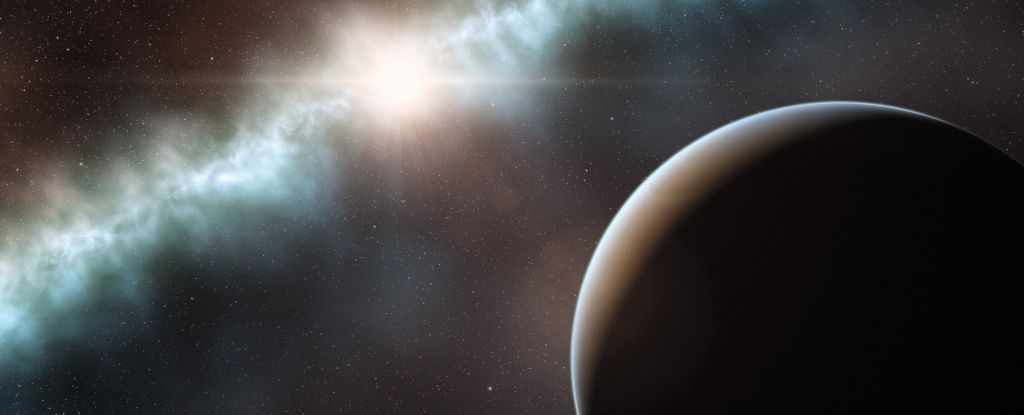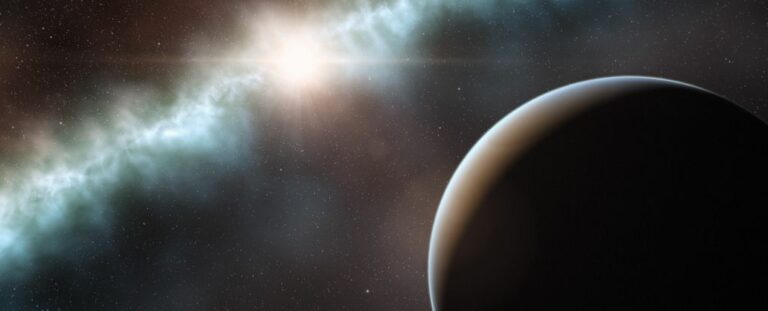Scientists Find Planet Resembling a Cannonball With Jupiter’s Size and Density Higher Than That of Lead.
A new discovery in the field of astronomy has revealed the presence of a cosmic cannonball. An exoplanet, TOI-4603b, the size of Jupiter, has been found orbiting a star located approximately 730 light-years away. What makes this finding significant is the planet’s incredible density, which defies our understanding of planetary formation and evolution. With a mass of almost 13 Jupiters, TOI-4603b is nearly three times denser than Earth and over nine times denser than Jupiter. It has a tight orbit around its star, completing a revolution in just 7.25 days.

The discovery of TOI-4603b has been published in Astronomy & Astrophysics Letters, and according to Akanksha Khandelwal, the lead author and an astronomer at the Physical Research Laboratory in India, it’s one of the most massive and densest transiting giant planets found so far.
Understanding the formation of such planets could be furthered by studying a small subset of massive close-in giant planets, including TOI-4603b, which have a high-mass planet and low-mass brown dwarf overlapping region. Theoretically, there is a limit to how much mass a planet can have before the temperature and pressure on the core are adequate to ignite nuclear fusion, the process of fusing atoms to form heavier elements.
The process of hydrogen fusion, where hydrogen atoms combine to form helium, typically begins for a star at a minimum mass of 85 Jupiters. Conversely, the upper mass limit for a planet is estimated to be between 10 to 13 Jupiters. Objects that fall between these two limits are known as brown dwarfs, which lack sufficient mass for hydrogen fusion but can still fuse deuterium, a heavy hydrogen isotope that requires less heat and pressure. The formation of stars typically starts from the top down, as a dense clump in a molecular cloud collapses under the force of gravity to form a protostar. The star then grows by accumulating material from the surrounding cloud, which coalesces into a disk. On the other hand, planets form from the bottom up, as small bits of debris clump together and gradually grow into planets, with the remaining dust and gas from this process forming the planets’ atmospheres.
Brown dwarfs, which are often found in wide orbits around stars at a minimum distance of five astronomical units (AU) or five times the distance between the Earth and the Sun, are believed to form in a similar way to stars, arising from a clump of material in a cloud. Notably, there is a dearth of brown dwarfs in close orbits around stars. TOI-4603b, a Jupiter-sized exoplanet with a density greater than lead, was initially identified through data from NASA’s TESS exoplanet-hunting space telescope. The planet was detected via periodic, small dips in the star’s light, indicating the presence of an orbiting exoplanet. Subsequent radial velocity measurements were then taken, which involved observing the star’s movement as it orbited around the planet’s center of gravity, enabling the team to calculate the mass of the exoplanet.
Researchers determined that TOI-4603b has a mass of 12.89 times that of Jupiter and an average density of 14.1 grams per cubic centimeter by combining its mass with its radius. This density is much higher than that of Jupiter and Earth but similar to that of lead. Although TOI-4603b meets the criteria for being classified as an exoplanet, it is also close to the brown dwarf mass limit. As such, it could be an important world for studying the formation and evolution of brown dwarfs and giant planets in relation to their stars. The exoplanet has an eccentric orbit, suggesting that it is still settling in, and it has a brown dwarf companion that may have interacted with it gravitationally, causing it to migrate closer to the star from a more distant position. It is not unusual for brown dwarfs to be much denser than TOI-4603b, as their average radius is typically 0.83 times that of Jupiter, and some can have masses of up to 61.6 Jupiters.
HATS-70b is a similar object that is also located close to its star and displays signs of migration. It has a mass of 12.9 times that of Jupiter and a radius of 1.384 times that of Jupiter, making it less dense than TOI-4603b. The researchers note that the detection of such systems will provide valuable insights into the dominant mechanisms involved in the formation and migration of massive planets, improving our understanding of these processes.
The research has been accepted in Astronomy & Astrophysics Letters, and is available on arXiv.
Do not forget to share your opinion with us to provide you with the best posts !




0 Comments